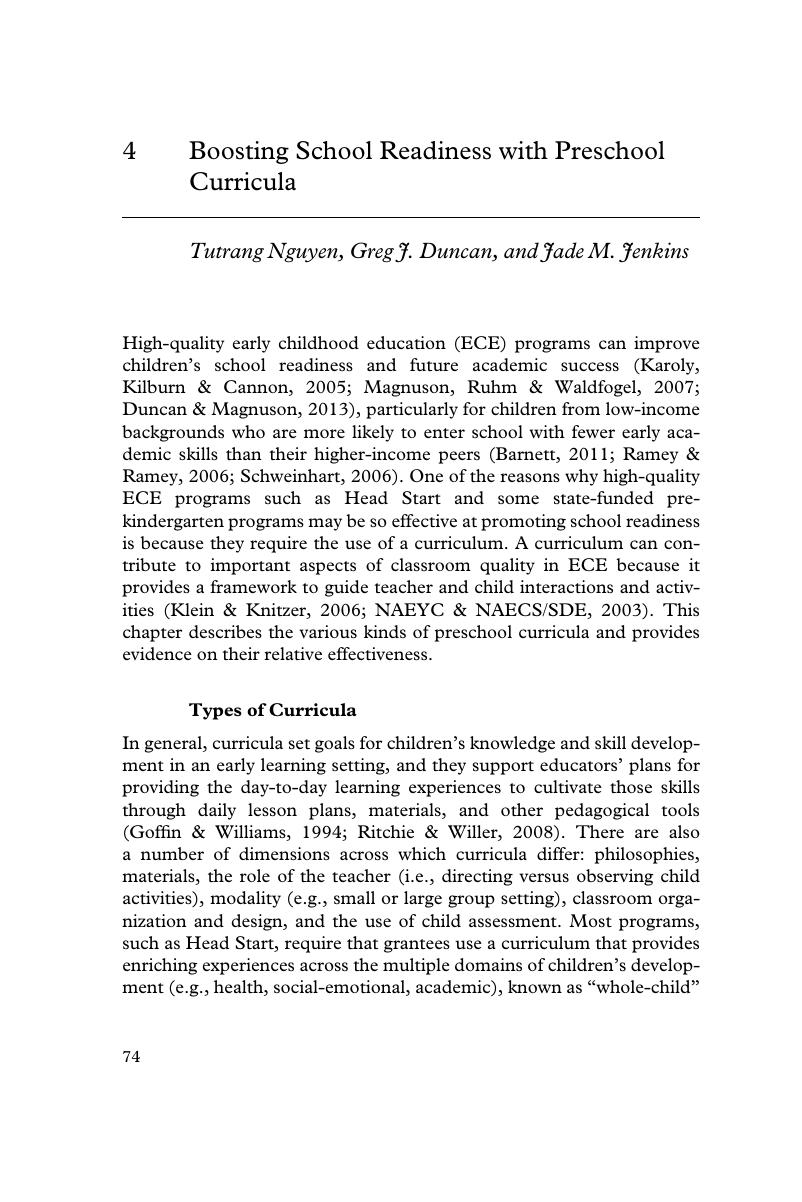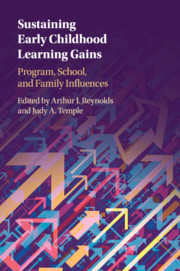Book contents
- Sustaining Early Childhood Learning Gains
- Reviews
- Sustaining Early Childhood Learning Gains
- Copyright page
- Contents
- Figures
- Tables
- Contributors
- Foreword
- Acknowledgments
- 1 Introduction
- Part I Program Dosage and Quality
- 2 Synthesis of Preschool Dosage
- 3 Teacher Influences and Program Effectiveness in Early Childhood Education
- 4 Boosting School Readiness with Preschool Curricula
- 5 What Can We Learn from State-of-the-Art Early Childhood Education Programs?
- Part II Continuity from Preschool to Third Grade
- Part III School and Family Processes of Impacts over Time
- Part IV Synthesis and Guiding Principles
- Subject Index
- Name Index
- References
4 - Boosting School Readiness with Preschool Curricula
from Part I - Program Dosage and Quality
Published online by Cambridge University Press: 21 December 2018
- Sustaining Early Childhood Learning Gains
- Reviews
- Sustaining Early Childhood Learning Gains
- Copyright page
- Contents
- Figures
- Tables
- Contributors
- Foreword
- Acknowledgments
- 1 Introduction
- Part I Program Dosage and Quality
- 2 Synthesis of Preschool Dosage
- 3 Teacher Influences and Program Effectiveness in Early Childhood Education
- 4 Boosting School Readiness with Preschool Curricula
- 5 What Can We Learn from State-of-the-Art Early Childhood Education Programs?
- Part II Continuity from Preschool to Third Grade
- Part III School and Family Processes of Impacts over Time
- Part IV Synthesis and Guiding Principles
- Subject Index
- Name Index
- References
Summary

- Type
- Chapter
- Information
- Sustaining Early Childhood Learning GainsProgram, School, and Family Influences, pp. 74 - 100Publisher: Cambridge University PressPrint publication year: 2019
References
- 4
- Cited by



